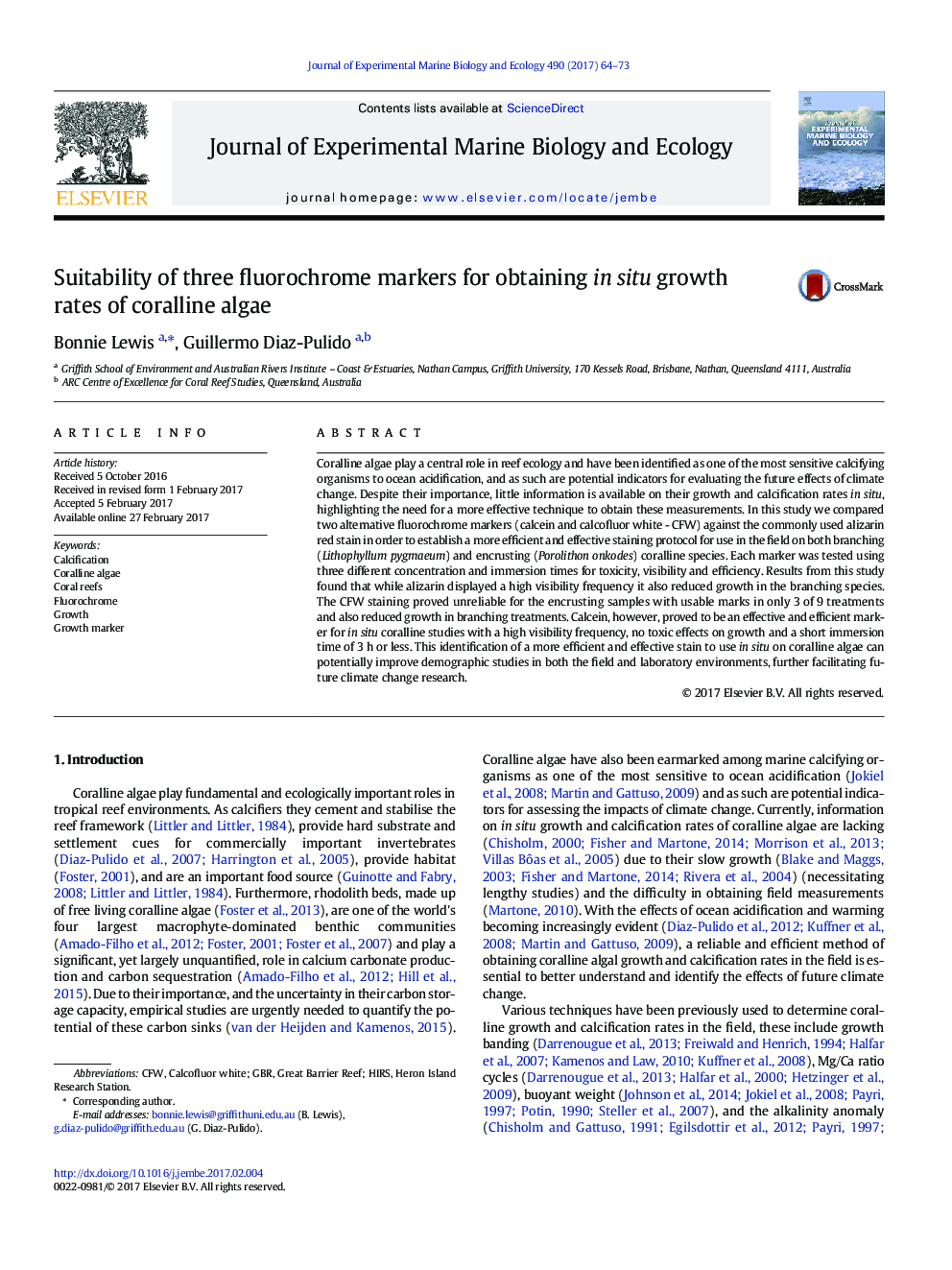| کد مقاله | کد نشریه | سال انتشار | مقاله انگلیسی | نسخه تمام متن |
|---|---|---|---|---|
| 5744512 | 1618385 | 2017 | 10 صفحه PDF | دانلود رایگان |
- This study identifies more effective and efficient staining methods to use on coralline algae in situ.
- The 24Â h immersion time most commonly used for staining coralline algae can be significantly reduced on some species.
- The fluorescent marker calcein produced highly visible and reliable marks in <Â 3Â h with no effects of toxicity.
- Immersion time of alizarin could be reduced down to at least 6Â h
- CFW demonstrated potential producing highly visible marks in <Â 10Â min but concentration needs to be further investigated.
Coralline algae play a central role in reef ecology and have been identified as one of the most sensitive calcifying organisms to ocean acidification, and as such are potential indicators for evaluating the future effects of climate change. Despite their importance, little information is available on their growth and calcification rates in situ, highlighting the need for a more effective technique to obtain these measurements. In this study we compared two alternative fluorochrome markers (calcein and calcofluor white - CFW) against the commonly used alizarin red stain in order to establish a more efficient and effective staining protocol for use in the field on both branching (Lithophyllum pygmaeum) and encrusting (Porolithon onkodes) coralline species. Each marker was tested using three different concentration and immersion times for toxicity, visibility and efficiency. Results from this study found that while alizarin displayed a high visibility frequency it also reduced growth in the branching species. The CFW staining proved unreliable for the encrusting samples with usable marks in only 3 of 9 treatments and also reduced growth in branching treatments. Calcein, however, proved to be an effective and efficient marker for in situ coralline studies with a high visibility frequency, no toxic effects on growth and a short immersion time of 3Â h or less. This identification of a more efficient and effective stain to use in situ on coralline algae can potentially improve demographic studies in both the field and laboratory environments, further facilitating future climate change research.
Journal: Journal of Experimental Marine Biology and Ecology - Volume 490, May 2017, Pages 64-73
